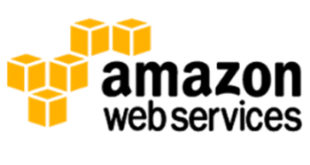There are a host of cloud products and services out there, but which should you offer? Myles Gilligan, sales manager at reseller Inspired Technology Services, explains.
It’s vitally important that businesses develop a cloud strategy that will create value, reduce IT costs, minimise downtime and ensure they stay ahead of the competition. But where do you start?
IaaS (Infrastructure as a Service) sees a third-party provider hosting virtualised computing resources over the internet. Using a web-based interface, the customer receives processing, storage, networking capabilities and other basic computer resources without managing or controlling the underlying infrastructure. The user can receive a fully outsourced service and will commonly be billed only for what they use.
SaaS (Software as a Service) is a software licensing and delivery model which provides access to software and its functions remotely as a web-based service. Often referred to as on-demand software, SaaS allows organisations access to business functionality on a monthly fee basis – often cheaper than paying for a license-based application.
PaaS (Platform as a Service) is used to provide customers with a platform that allows them to develop, run and manage web applications having to build and maintain the infrastructure. PaaS eliminates the expense and complexity of evaluating, buying, configuring and managing all the hardware and software needed for these custom- built applications. It is delivered as either a public cloud service from a provider or as software, which is then managed by internal IT departments.
DRaaS (Disaster Recovery as a Service) is when the user utilises the cloud to replicate and host physical or virtual servers via a third-party – helping to provide failover in the event of a disaster. The implementation of DRaaS eliminates the need for additional investment and maintenance of an off-site disaster recovery system.
BRaaS (Backup and Recovery as a Service) offers the same peace of mind as DRaaS by providing an alternative to traditional physical media based backup with protection and recovery made easily accessible. Delivered as a fully managed service, BRaaS is securely incorporated into the user’s network to maximise their IT infrastructure.
BaaS (Backend as a Service) addresses the cloud computing needs of web and mobile app developers, by providing a unified means of connecting their apps to cloud services. It includes storage, notifications, user and file management, network integration and more.
With DBaaS (Database as a Service), the user will not need database experts or administrators as this is all managed by a public or private cloud operator that supports applications. The application team won’t have to assume responsibility for traditional database admin functions, and in theory, the database is able to scale seamlessly.
Myles Gilligan is sales manager at reseller Inspired Technology Services.
www.inspiredtech.co.uk
 PCR Tech and IT retail, distribution and vendor news
PCR Tech and IT retail, distribution and vendor news



